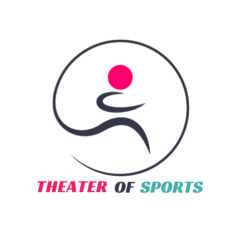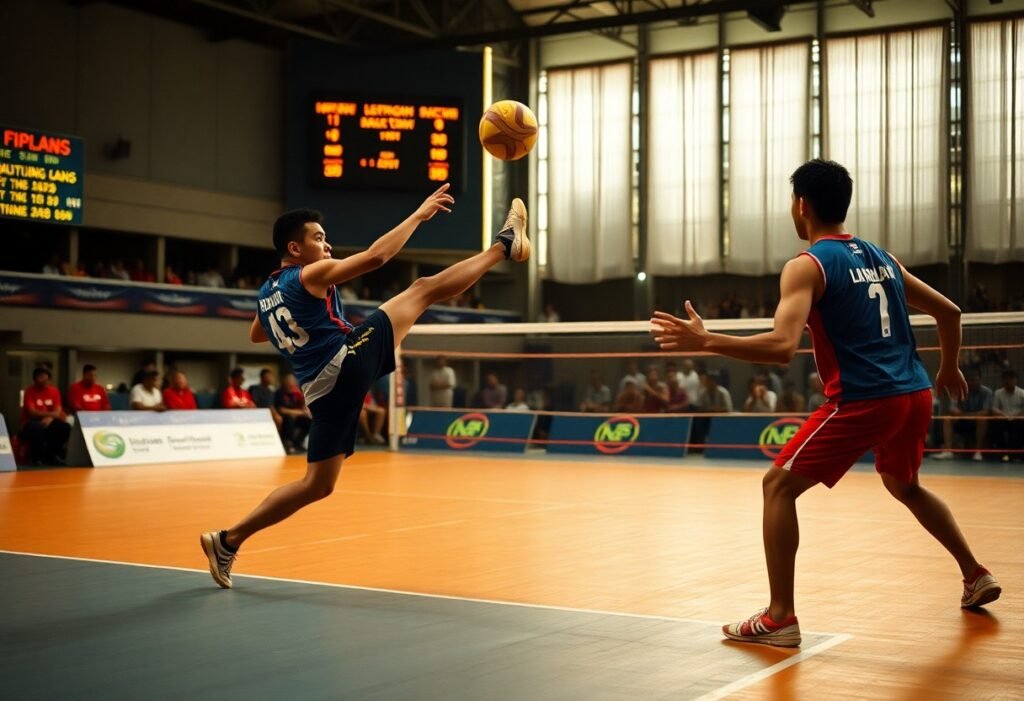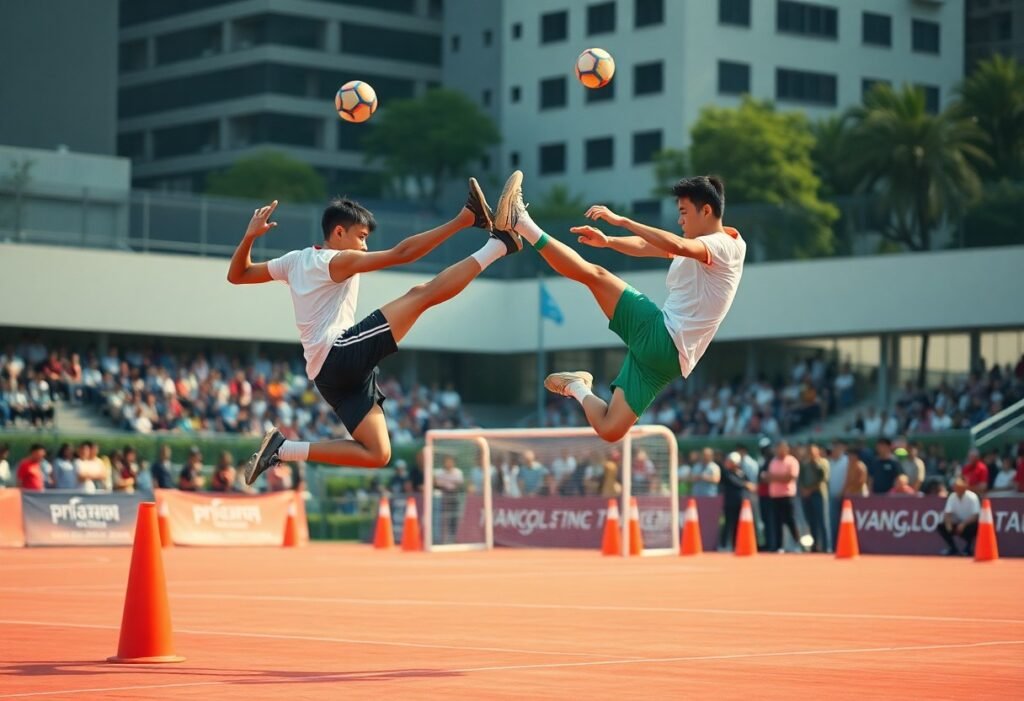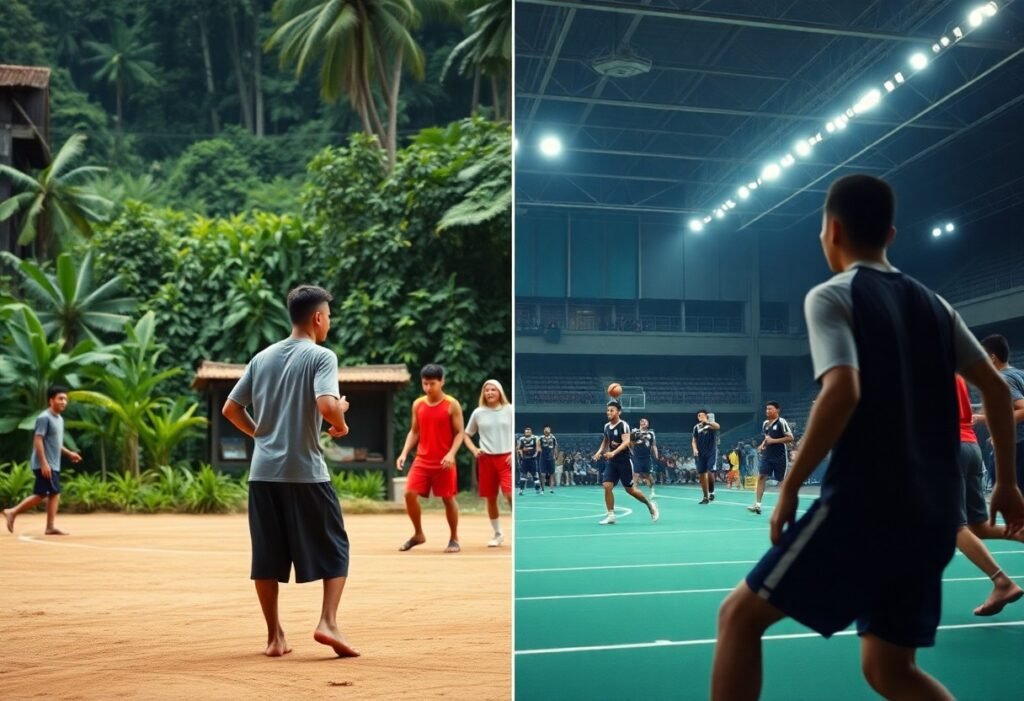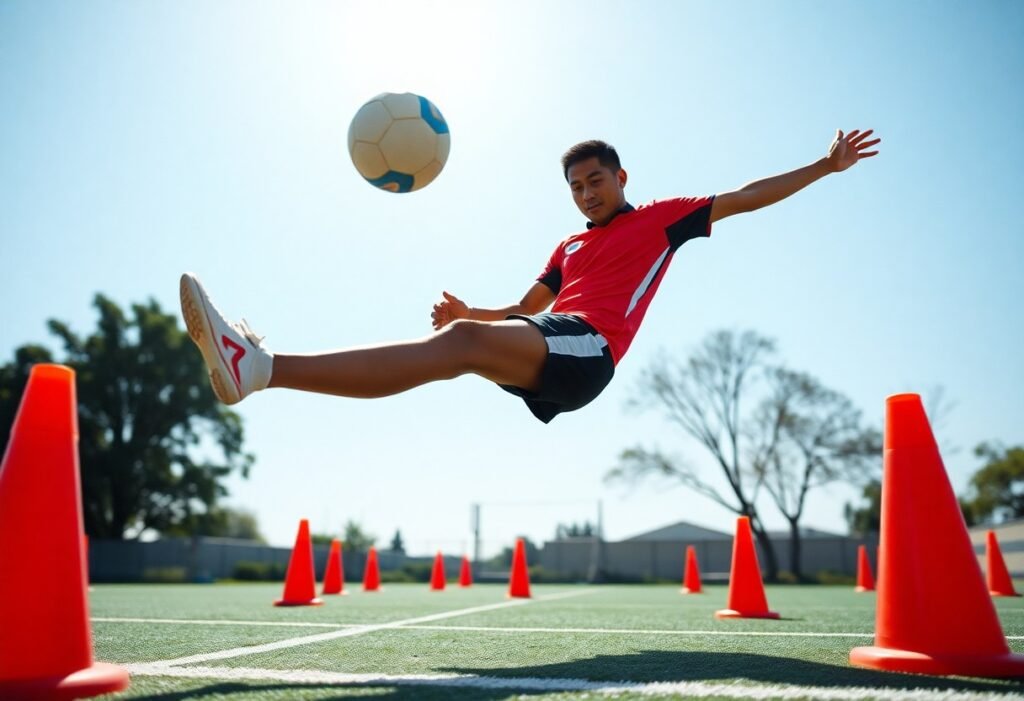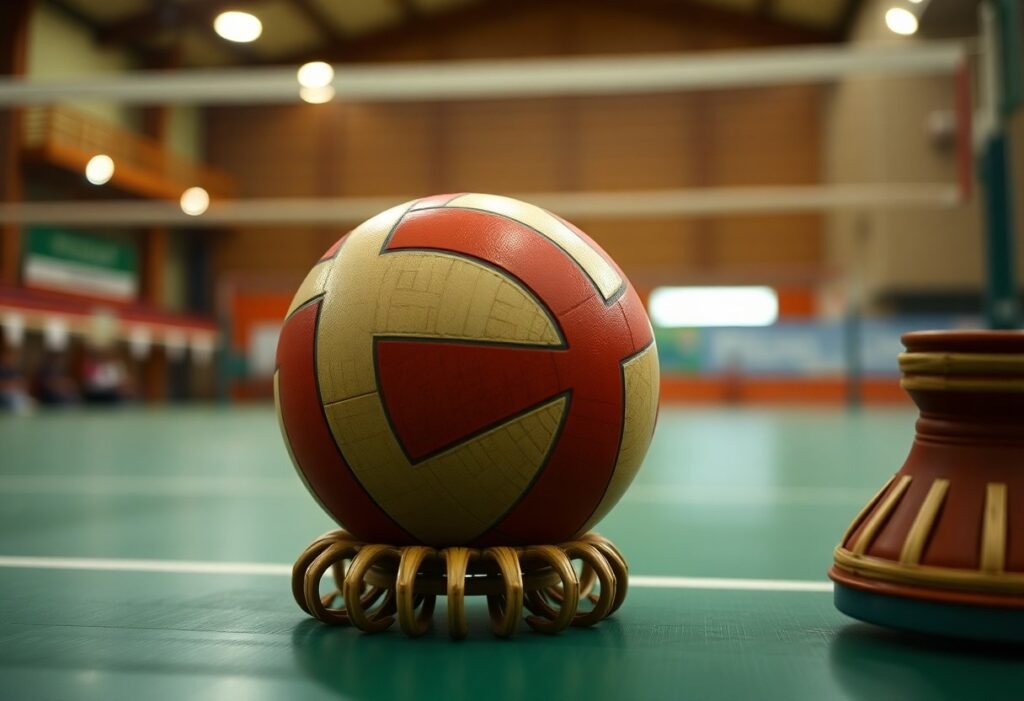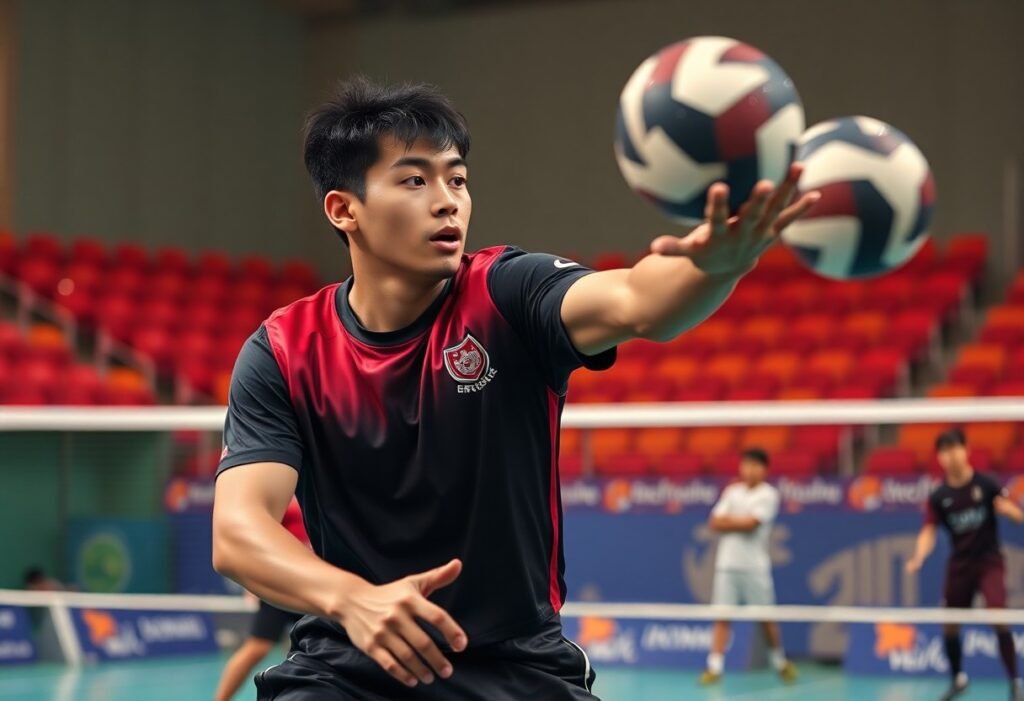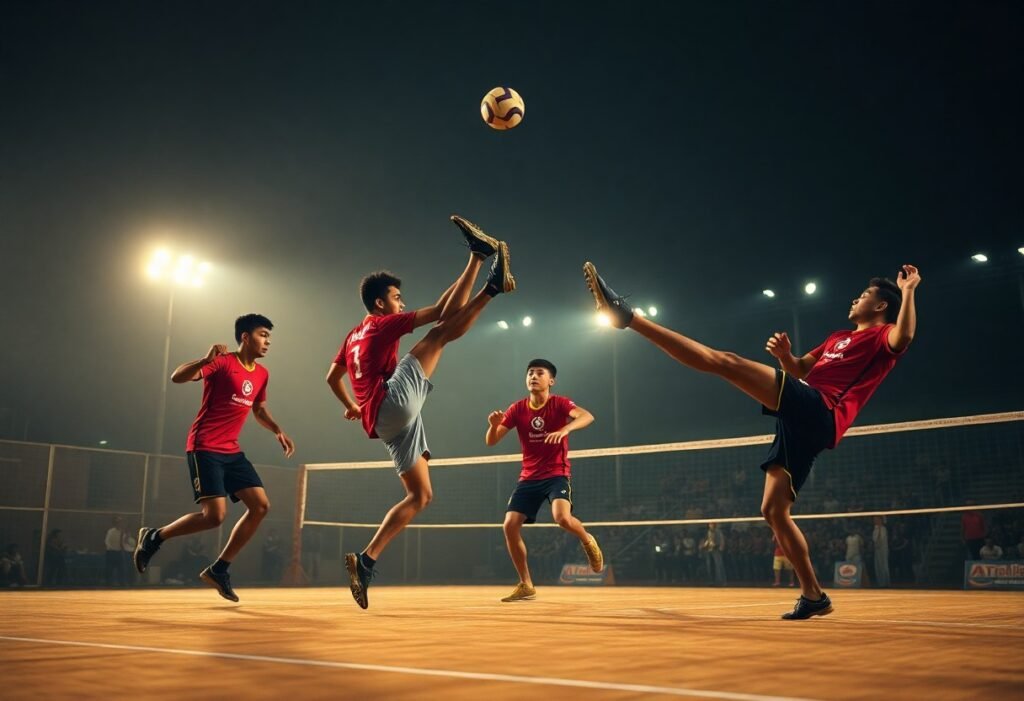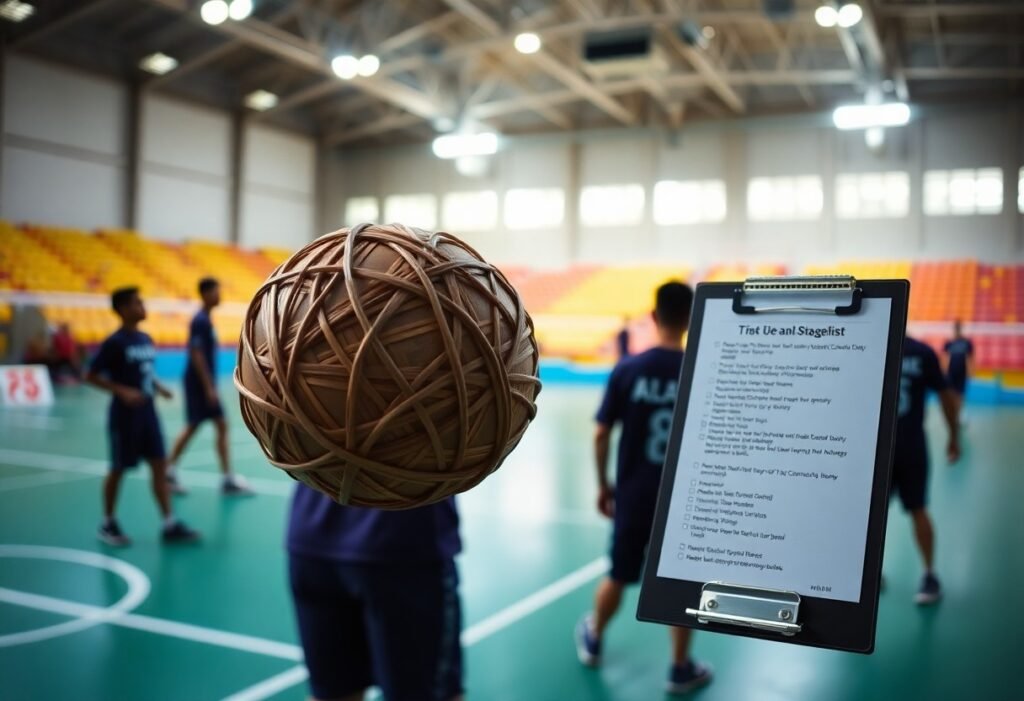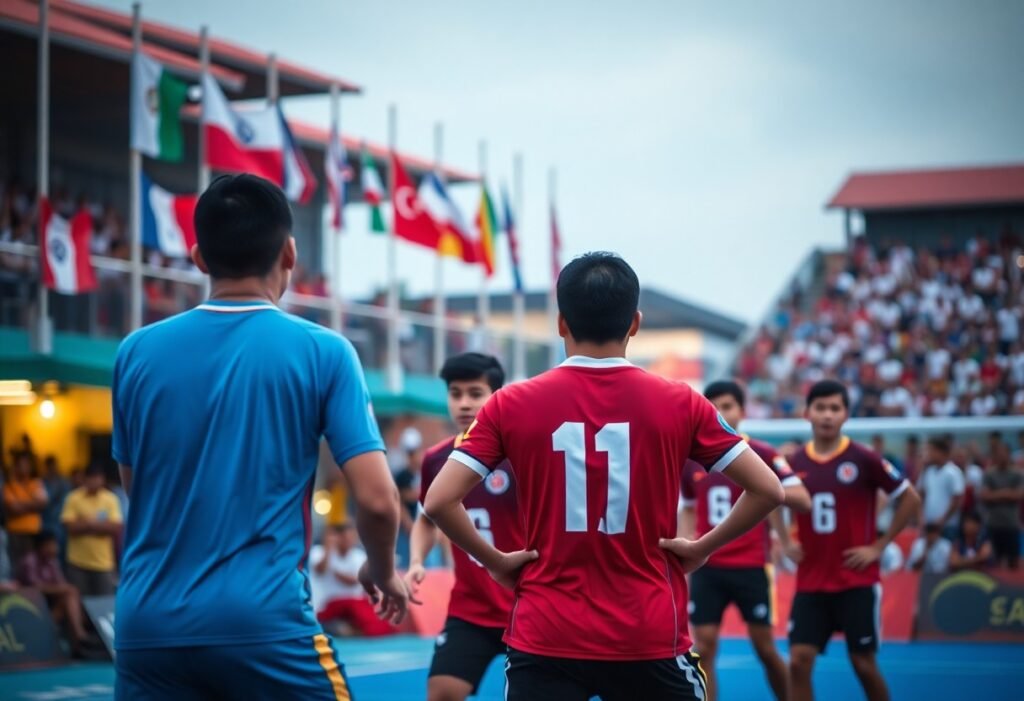Over the years, you may have enjoyed playing sepak takraw casually, but now you’re ready to elevate your game to the competitive level. Transitioning from amateur to competitive sepak takraw requires dedication, advanced skills, and strategic training. In this guide, you’ll discover vital tips on improving your techniques, building physical fitness, and understanding competitive dynamics that will help you shine in tournaments. Get ready to embrace the challenges and excitement that come with taking your passion for sepak takraw to new heights!
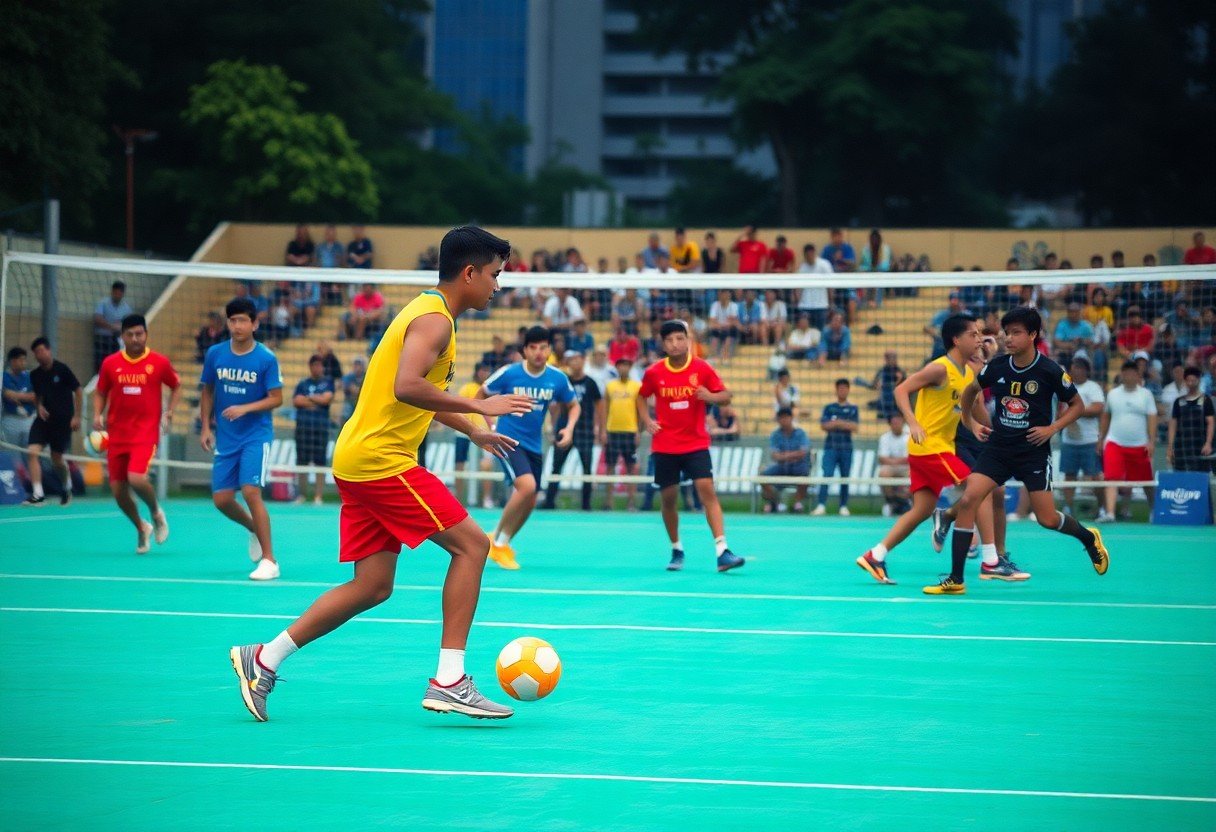
Key Takeaways:
- Focus on mastering fundamental skills such as serving, passing, and spike techniques to build a strong foundation.
- Participate in local tournaments and training sessions to gain experience and enhance competitive gameplay.
- Seek feedback from coaches and experienced players to refine your strategy and improve your overall performance.
Understanding Sepak Takraw
Your journey into the world of Sepak Takraw begins with a foundational understanding of this mesmerizing sport, steeped in tradition and skill. Appreciating its history, rules, and required skills will set the stage for your transition from amateur to competitor.
The History and Origins of Sepak Takraw
Assuming you have a passion for the game, it’s fascinating to note that Sepak Takraw originated in Southeast Asia, with roots tracing back centuries. From its early forms in Malaysia to its establishment as a competitive sport, Sepak Takraw has evolved significantly, showcasing unique athleticism and cultural heritage.
Rules and Regulations of Competitive Play
Understanding the framework of competitive play is vital for any aspiring player. The sport features two primary formats: singles and doubles, played on a court similar to badminton. Each team must legally hit the ball over the net, while maintaining strict adherence to serve and scoring protocols.
A grasp of the rules and regulations of competitive Sepak Takraw not only helps you avoid penalties but also enhances your strategic approach. Points are scored when the opposing team fails to return the ball successfully. Key aspects include unique serving techniques and understanding the role of the referee, who oversees adherence to rules during matches. Familiarizing yourself with these guidelines can significantly improve your chances of success.
Key Skills Required for Competitive Sepak Takraw
Sepak Takraw demands a range of intricate skills, including agility, coordination, and precision. As a player, you will need to master various techniques like serving, spiking, and defensive maneuvers.
Takraw emphasizes the development of your athletic abilities and technical skills. You will benefit from focused training on footwork, as quick and accurate movements are vital for anticipating plays. Additionally, practicing your timing and control can enhance your ability to send the ball with power and tact. Building these fundamental skills lays the groundwork for effective competitive play and prepares you for higher levels of the sport.
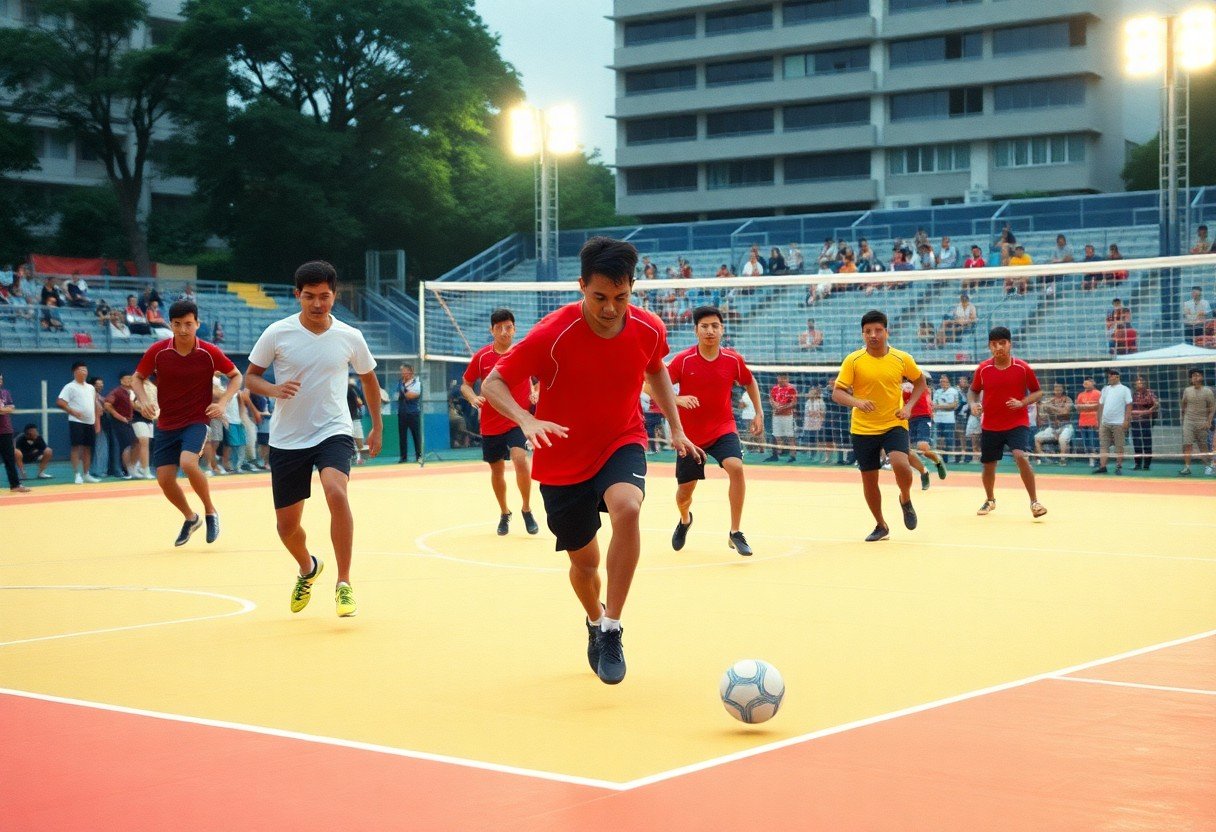
Assessing Your Current Skill Level
You need to gain a clear understanding of your current abilities to make a successful transition from amateur to competitive Sepak Takraw. This involves a deep examine your strengths and weaknesses, seeking valuable feedback, and evaluating your performance in matches. With this knowledge, you can better tailor your training regimen to address areas that require improvement and enhance your overall game strategy.
Identifying Strengths and Weaknesses
Assessing your skills begins with a thorough evaluation of your strengths and weaknesses. Take note of your most effective techniques, such as your serving or reflexes, and pinpoint areas where you struggle, like ball control or positioning. This self-assessment will provide a personalized foundation for your training.
Seeking Feedback from Coaches and Peers
One of the best ways to identify your strengths and weaknesses is by seeking feedback from your coaches and teammates. Their insights can reveal blind spots in your game that you may not notice yourself.
Skill development often relies heavily on the perspectives of experienced individuals. Coaches can provide specific observations about your technique and strategies, which might highlight areas for improvement you hadn’t considered. Additionally, feedback from teammates allows you to see how you fit into team dynamics, enhancing your understanding of what you need to work on while playing in various positions.
Evaluating Game Performance
If you want to transition effectively, it’s crucial to evaluate your game performance regularly. Observe how you handle different match situations and note your decision-making under pressure.
The key aspects of performance evaluation include analyzing your successful plays as well as your mistakes. By reviewing match footage or discussing outcomes with peers, you can identify patterns in both your strengths and areas needing improvement. This structured evaluation will allow you to address specific elements of your gameplay that could lead to significant gains in your overall competitive performance.
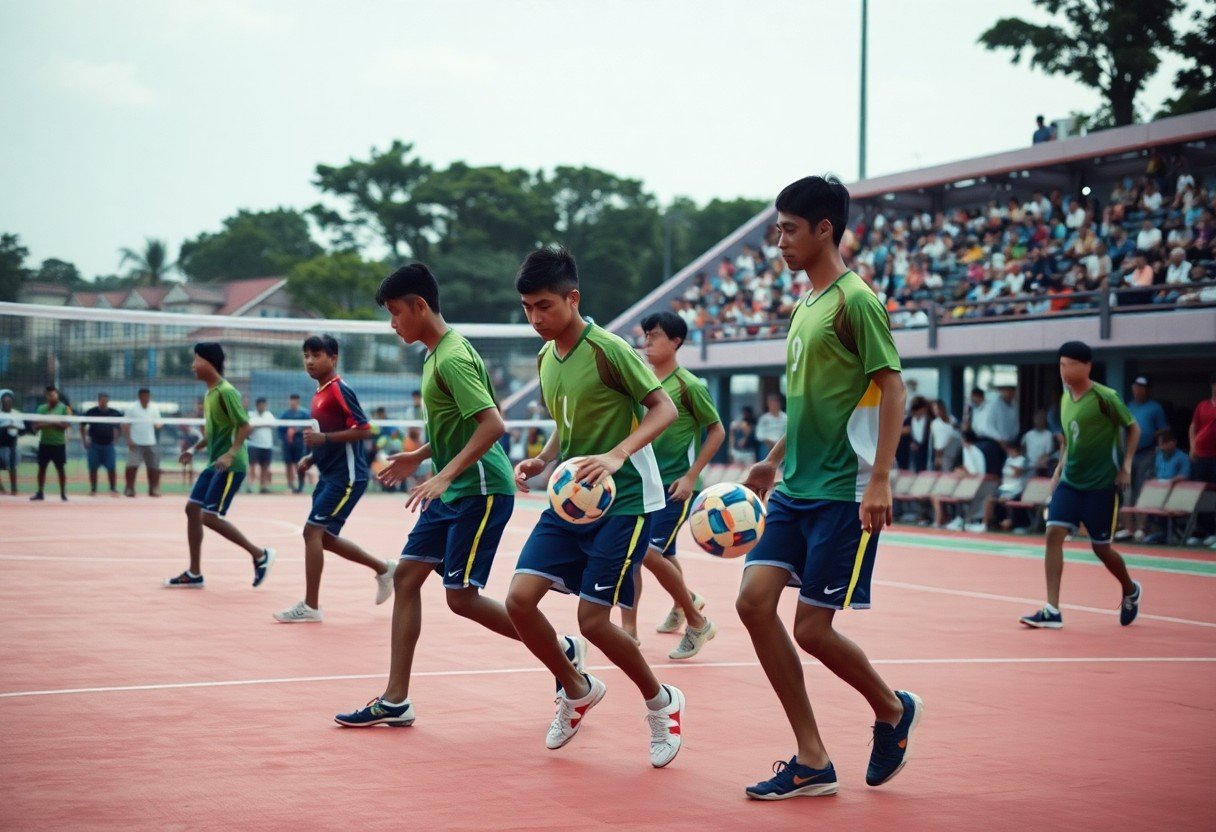
Setting Goals for Improvement
Many athletes find that setting clear goals is vital to their journey from amateur to competitive levels in sepak takraw. By defining what you want to achieve, you can create a structured path for your improvement, ensuring you remain focused and motivated throughout your training.
Short-term vs. Long-term Goals
Some goals can be achieved quickly, such as improving your serve technique or increasing your stamina. Short-term goals typically span weeks or months, while long-term goals may stretch over a year or more. Both types of goals serve as vital markers in your progress and help build a foundation for your competitive aspirations.
SMART Goals: Specific, Measurable, Achievable, Relevant, Time-bound
On your journey, consider setting SMART goals. These are defined as Specific, Measurable, Achievable, Relevant, and Time-bound objectives that allow you to track your progress effectively. By utilizing this framework, you increase your chances of accomplishing your desired improvements in your game.
This method encourages you to break down your goals into actionable steps. For instance, instead of saying, “I want to be better at serving,” specify that you want to “increase your accurate serves by 20% within three months.” Such clarity keeps your efforts focused and manageable, helping you stay motivated as you notice progress.
Keeping Track of Progress
Specific goals require effective tracking. Maintaining a training journal or using digital tools to log your practice sessions, matches, and performance levels can provide insights into areas needing improvement. Regular reflections will help you adjust your strategies accordingly.
Short-term tracking allows you to assess smaller milestones while long-term tracking provides a broader view of your growth. Analyze your results periodically, and consider feedback from coaches or peers to gain a well-rounded perspective on your development. This feedback loop is vital in refining your skills and ensuring you remain on course to achieve your goals.
Training Techniques for Transitioning
Now, as you prepare to elevate your sepak takraw skills, mastering effective training techniques will be important for your transition from amateur to competitive player. Focusing on specific drills, physical conditioning, and mental preparation can significantly enhance your performance on the court.
Skill Development Drills
There’s a variety of skill development drills that you can incorporate into your practice sessions to improve your play. Focus on enhancing your passing, serving, and spiking with targeted exercises such as wall drills, partner passes, and spike practice using different foot techniques.
Agility and Conditioning Exercises
The foundation of a successful competitive player lies in agility and conditioning exercises. These workouts help you build the necessary strength, speed, and stamina required for high-intensity gameplay.
Conditioning routines should include exercises like sprints, lateral movements, and plyometric drills that simulate the quick, unpredictable nature of sepak takraw. Incorporate agility ladders, cone drills, and interval training to improve your on-court responsiveness. This enhanced fitness will not only improve your gameplay but also reduce the risk of injuries during competitions.
Mental Preparation and Focus Techniques
Even the most physically capable players can falter without proper mental preparation. Cultivating focus and confidence will give you the edge needed to perform under pressure.
Agility in your thought process is as important as physical agility. Develop strategies to maintain your composure, such as visualization techniques, meditation, and goal setting. Creating a focused mindset will allow you to anticipate plays, react swiftly, and perform at your best when it matters. By prioritizing your mental game, you’ll set yourself up for success in competitive environments.
Finding Competitive Play Opportunities
Unlike casual play, transitioning to competitive sepak takraw requires you to seek out formal play opportunities. Engaging in competition not only improves your skills but also enhances your understanding of the game. Investigating resources can be beneficial, such as the automated sepak takraw ball throwing mechanism for training purposes.
Joining Local Clubs and Teams
Competitive play often starts with joining local clubs and teams. Involvement in a club helps you surround yourself with experienced players who can mentor you and provide opportunities for practice and improvement.
Participating in Tournaments and Leagues
With the right mindset, participating in tournaments and leagues can substantially elevate your game. By exposing yourself to different playing styles, you not only challenge your skills but also gain valuable experience that is hard to replicate in casual settings.
Leagues are an excellent way to immerse yourself in the competitive world of sepak takraw. As you face various opponents on a regular basis, you will learn to adapt quickly and develop strategies to overcome challenges you might not encounter during practice.
Networking with Other Players
Participating in competitive play creates opportunities to network with other players. Building these connections is valuable for sharing tips, resources, and insights about improving your game and finding more advanced training options.
To maximize your growth in sepak takraw, enthusiastically engage with your fellow players. Sharing experiences can motivate you to push your limits and integrate various play styles into your own approach. Creating lasting relationships can also lead to potential partnership opportunities in future competitions.
Nutrition and Recovery Strategies
Once again, neglecting proper nutrition and recovery can hinder your transition from amateur to competitive Sepak Takraw. Taking control of these aspects will help you perform better and reduce the risk of injuries, allowing you to focus on honing your skills and competing effectively.
Understanding Nutritional Needs for Athletes
One of the first steps in elevating your game is understanding your nutritional needs as an athlete. Your diet should include a balance of carbohydrates, proteins, and fats, tailored to your training intensity and duration. Consuming whole foods like fruits, vegetables, lean meats, and whole grains will help fuel your body and improve recovery.
Importance of Hydration
An athlete’s performance largely depends on staying hydrated. Dehydration can negatively impact your strength, endurance, and focus. Therefore, making hydration a priority before, during, and after training is crucial. Aim for clear urine as an indicator of proper hydration levels.
Another point to consider is that even mild dehydration can reduce your athletic performance. Always carry a water bottle and replenish fluids regularly, especially during intense training sessions or matches. Electrolyte drinks can also be beneficial, as they replace lost minerals through sweat and help maintain your body’s fluid balance, ensuring you remain energized throughout your training and competition.
Recovery Techniques to Enhance Performance
Hydration alone is not enough; employing effective recovery techniques is vital for your overall performance. Incorporate strategies such as proper rest, stretching, and foam rolling to aid muscle recovery and reduce soreness. These techniques will allow you to bounce back quicker and be more ready for your next training session or competition.
This holistic approach to recovery will enable your body to repair itself and adapt to training loads more effectively. Be sure to integrate a variety of elements, such as sleep hygiene and nutrition, into your recovery regime to maximize your potential. Focusing on these recovery aspects not only helps you perform better but also supports your long-term athletic journey.
To wrap up
Taking this into account, transitioning from amateur to competitive Sepak Takraw requires dedication, practice, and a strategic approach to skill development. By focusing on mastering the fundamentals, participating in local leagues, and seeking guidance from experienced players and coaches, you can sharpen your abilities and build confidence. Emphasize teamwork, conditioning, and mental resilience, as these are vital for competitive success. With persistence and a commitment to improvement, you can elevate your game and make your mark in the competitive arena of Sepak Takraw.
FAQ
Q: What are the initial steps I should take to transition from amateur to competitive Sepak Takraw?
A: Start by enhancing your fundamentals, which involve mastering basic skills such as kicking, setting, and spiking the ball. Regular practice with both casual players and more experienced ones can help you identify areas for improvement. Additionally, find local tournaments or clubs where you can engage in more competitive environments, allowing you to test your skills against opponents of varying levels.
Q: How can I improve my physical fitness for competitive Sepak Takraw?
A: Physical fitness is vital for success in Sepak Takraw. Incorporate a balanced training regimen that focuses on strength, agility, and endurance. Exercises such as sprints, agility drills, and strength training targeting your legs, core, and upper body will enhance your performance. Additionally, consider including flexibility exercises like yoga or stretching routines to prevent injuries and improve your mobility on the court.
Q: What strategies should I adopt to improve my gameplay in competitive environments?
A: Developing solid strategies is necessary for competitive play. Focus on learning game tactics such as positioning, communication with teammates, and adapting to opponents’ styles. Observing matches—both your performances and those of others—can provide insight into effective strategies. Practicing drills that emphasize teamwork and strategic thinking will also enhance your ability to execute plays during matches.
Q: How can I find tournaments or leagues for competitive Sepak Takraw?
A: Look for local Sepak Takraw associations, clubs, or community centers that may host tournaments or leagues. Online resources such as social media groups, forums, and websites dedicated to Sepak Takraw can also provide updates on upcoming events. Networking with other enthusiasts and players can lead to discovering opportunities to participate in competitions, both locally and regionally.
Q: What mental skills or mindset should I develop for competitive Sepak Takraw?
A: A strong mental game is just as important as physical skills in competitive Sepak Takraw. Work on developing resilience, focus, and a positive attitude. Techniques such as visualization—imagining successful performances—and mindfulness practices can help reduce performance anxiety and enhance concentration during matches. Setting achievable goals can also motivate you to maintain a growth-oriented mindset throughout your transition to a competitive player.
